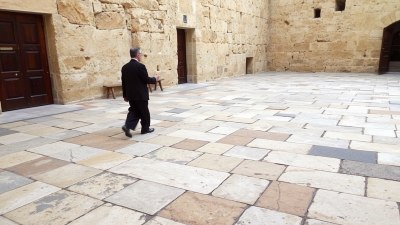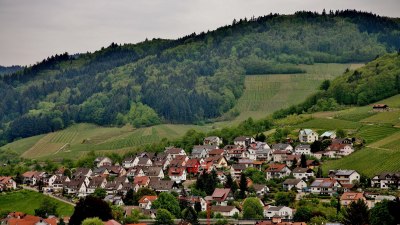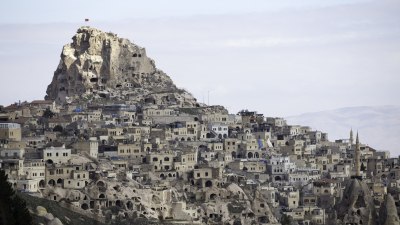The Texture of Worship on the Stone Floors of Jerusalem
Explore the profound significance of Jerusalem's stone floors in worship practices and their impact on spirituality.

Image created with Flux Schnell
Jerusalem, a city steeped in history and spirituality, has long been considered a pivotal place of worship for multiple faiths. The stone floors that stretch across its sacred sites are not mere physical surfaces; they possess a texture that echoes centuries of devotion, tradition, and communal identity. The textured stones tell stories of countless pilgrims, worshippers, and visitors who have walked upon them, each step resonating with reverence and spiritual longing. This article delves into the significance of these stone floors, exploring how they contribute to the worship experience and the deep symbolic meanings they hold within the sacred landscapes of Jerusalem.
The Historical Context of Worship in Jerusalem
To understand the texture of worship on the stone floors of Jerusalem, one must first consider the historical context of this ancient city. Jerusalem has been a focal point for Judaism, Christianity, and Islam, each faith contributing to the richness of its religious life. From the ancient Temple of Solomon to the Western Wall, and from the Church of the Holy Sepulchre to the Al-Aqsa Mosque, the city's sacred sites have shaped the worship experiences of innumerable individuals throughout history. The stone floors, often rough-hewn or polished, serve as the foundations upon which these spiritual practices unfold, embodying the weight of tradition and the physicality of faith.
The Symbolism of Stone in Religious Practices
Stone holds a significant place in many religious traditions, often symbolizing permanence, strength, and the divine. In Judaism, for instance, stones are seen as a representation of God's covenant with the people. The tablets given to Moses on Mount Sinai were carved from stone, illustrating the importance of this material in the spiritual narrative. Similarly, Christian theology often interprets Christ as the 'cornerstone' of faith, establishing a foundation for believers. In Islam, the Kaaba in Mecca, covered with black stone, serves as a focal point for prayer, emphasizing the sacredness associated with stone structures. Thus, the stone floors of Jerusalem are not only functional but are imbued with deep religious significance, inviting contemplation and reverence.
The Physical Experience of Worship on Stone Floors
The tactile experience of walking on stone floors cannot be underestimated. As worshippers enter sacred spaces, the sensation of cool stone beneath their feet can evoke a physical reminder of the journey of faith. This experience connects them to those who have gone before, creating a tangible link between past and present. The uneven surface of ancient stones, worn down by the passage of time, can symbolize the struggles and perseverance inherent in any spiritual journey. Each scratch, chip, and blemish tells a story, inviting worshippers to reflect on their own lives and journeys as they navigate the same sacred ground.
Gathering Spaces: The Role of Stone Floors in Community Worship
Stone floors often serve as gathering places, where communities come together to worship, celebrate, and mourn. In Jerusalem, the vast open plazas, intimate chapels, and expansive temples all feature stone flooring that enhances the communal experience of worship. During Passover, Easter, or Ramadan, large gatherings take place on these stone surfaces, where individuals unite in prayer, song, and ritual. The shared experience of standing on the same stone ground fosters a sense of belonging and communal identity, reinforcing the bonds of faith among individuals. As worshippers kneel to pray or stand to sing, their bodies engage with the stones, their physical presence marking the space as sacred.
The Role of Pilgrimage and the Stones of Jerusalem
For many, pilgrimage to Jerusalem is a profound spiritual journey, and the stone floors they walk upon become integral to their transformative experience. Pilgrims often seek out specific sites—whether it is the Western Wall, the Via Dolorosa, or the Mount of Olives—traversing the ancient paths laid with stones that have witnessed centuries of faith. These surfaces allow pilgrims to commune not only with the divine but also with the collective memory of countless others who have walked the same paths. Each footfall becomes an offering, a prayer of sorts, and a recognition of the interconnectedness of all believers. The stone floors of Jerusalem become both a destination and a part of the journey, encapsulating the essence of pilgrimage.
Preservation of Sacred Spaces: The Importance of Stone Maintenance
The enduring nature of stone also raises questions about preservation and maintenance. As Jerusalem continues to be a site of religious significance and a tourist destination, the integrity of its sacred spaces must be upheld. The custodians of these sites work diligently to preserve the stone floors, ensuring that they remain respectful to their historical and spiritual significance. Regular cleaning, restoration, and repairs are vital to maintaining the aesthetics and functionality of the spaces where worship occurs. This practice not only honors the past but also ensures that future generations can continue to experience the texture of worship on these sacred floors.
Art and Expression: The Decorative Aspects of Stone Floors
Beyond their functional role, the decorative aspects of stone floors in Jerusalem contribute to the spiritual ambiance of worship. Intricate mosaics, carvings, and designs often adorn these surfaces, transforming simple stone into a canvas of artistic expression. These artistic elements serve not only an aesthetic purpose but also convey theological messages and historical narratives. For instance, the stunning mosaics of the Church of the Holy Sepulchre illustrate biblical events, inviting worshippers to engage visually with their faith. These decorations enhance the experience of worship, offering layers of meaning that resonate with the spiritual seekers who traverse these stone floors.
Modern Worship and the Evolution of Sacred Spaces
As society evolves, so too do the methods and spaces of worship. Contemporary practices may incorporate a variety of elements, but the stone floors of Jerusalem remain a constant presence. Modern worshippers may engage with technology, multimedia presentations, or new forms of spiritual expression, yet the tactile connection to the ancient stones endures. This clash of the old and new creates a dynamic worship environment, as individuals navigate their faith in an ever-changing landscape. The stone floors serve as both a reminder of tradition and an invitation to explore new dimensions of worship, bridging the gap between the past, present, and future.
The Personal Connection: Finding Spiritual Meaning
For many believers, walking on the stone floors of Jerusalem creates moments of profound personal connection with their faith. Each visit foreshadows a deeper understanding of their own spiritual journey—the texture of the stone becomes a metaphor for the complexities of life, faith, and worship. Individuals may find themselves reflecting on personal struggles, moments of joy, or lessons learned while standing on these ancient stones. The experience of worship can become deeply personal, informed by the individual’s own history and relationship with the divine. As they kneel, sit, or stand, the stones seem to hold their stories, each devoted moment engraved in the texture beneath their feet.
A Place for Contemplation: Silent Reflection on Stone Floors
Silence has a unique place in the texture of worship on the stone floors of Jerusalem. Amidst the hustle and bustle of the city, these sacred sites often provide a sanctuary for quiet contemplation. Worshippers may find moments of stillness between prayers, allowing the smoothness or roughness of the stone beneath them to guide their thoughts inward. In these reflective moments, the stones become witnesses to personal revelations, bringing clarity and peace. This practice of silent contemplation—sitting on the cool stone, feeling its presence—transforms the physical act of being in a sacred space into a deeply spiritual experience.
The Future of Worship and the Stone Floors of Jerusalem
As Jerusalem looks toward the future, the importance of its stone floors in worship remains steadfast. The ongoing challenges of preservation, modern interpretations of faith, and the city's role as a religious hub for diverse populations create a dynamic environment for continued exploration of worship. The stones will continue to bear witness to all who come to seek solace, connection, and understanding. They hold within them the texture of generations, encompassing the essence of worship in all its forms. Ultimately, the stone floors of Jerusalem offer more than a physical foundation; they embody the spiritual journey of humankind, encapsulating the sacred through the texture of each stone.
Walking the Path of the Ancients
In conclusion, the texture of worship on the stone floors of Jerusalem is a powerful metaphor for the spiritual experiences that unfold in this revered city. The historical significance, tactile sensations, communal dimensions, and personal connections established through these stones enrich the worship experience and transform simple footsteps into profound acts of devotion. As individuals walk upon these ancient stones, they participate in a legacy of faith that spans millennia, weaving their own story into the tapestry of worship found on the sacred ground of Jerusalem. Whether reflecting in silence or joining in communal prayer, every encounter with the stone floors becomes an integral part of the spiritual journey, bridging the ancient past with the ever-evolving present.











